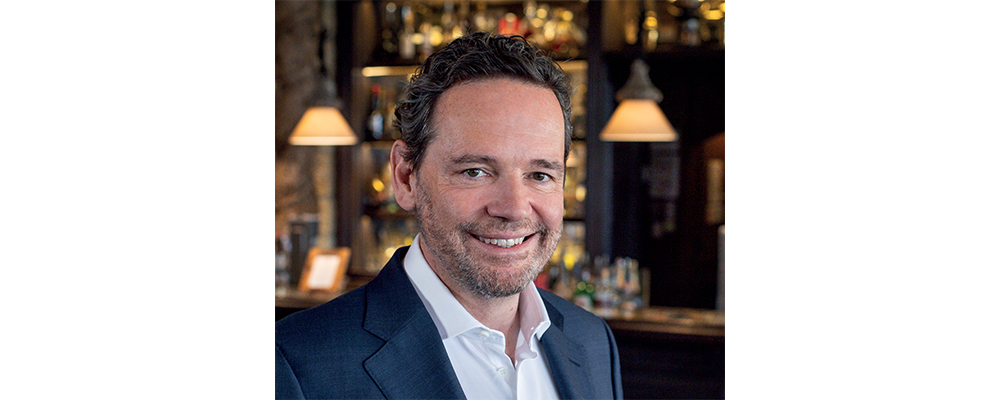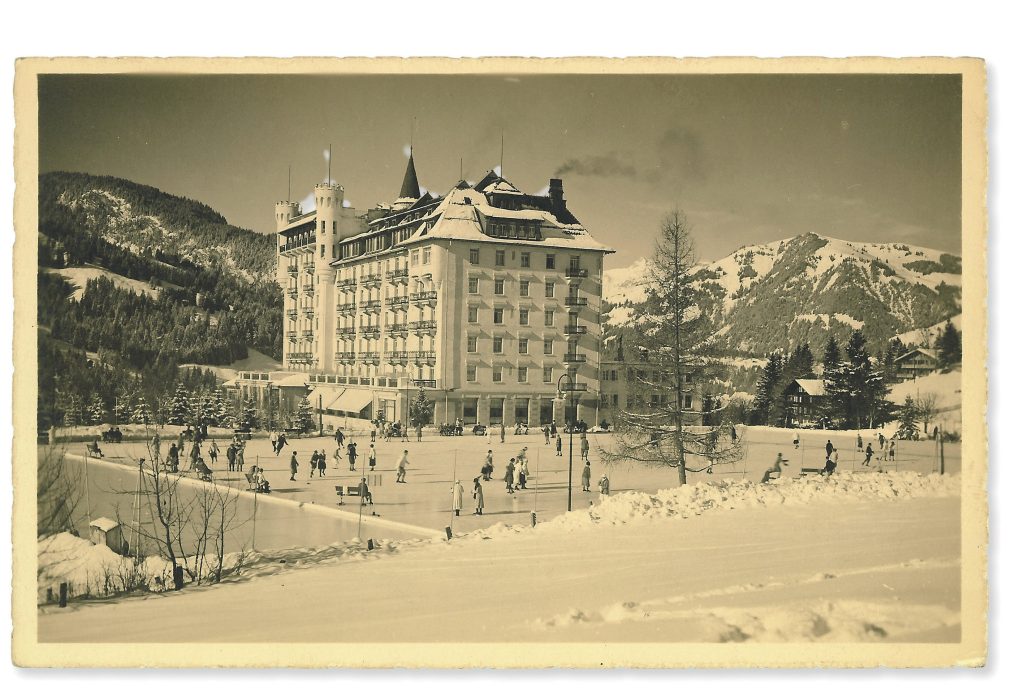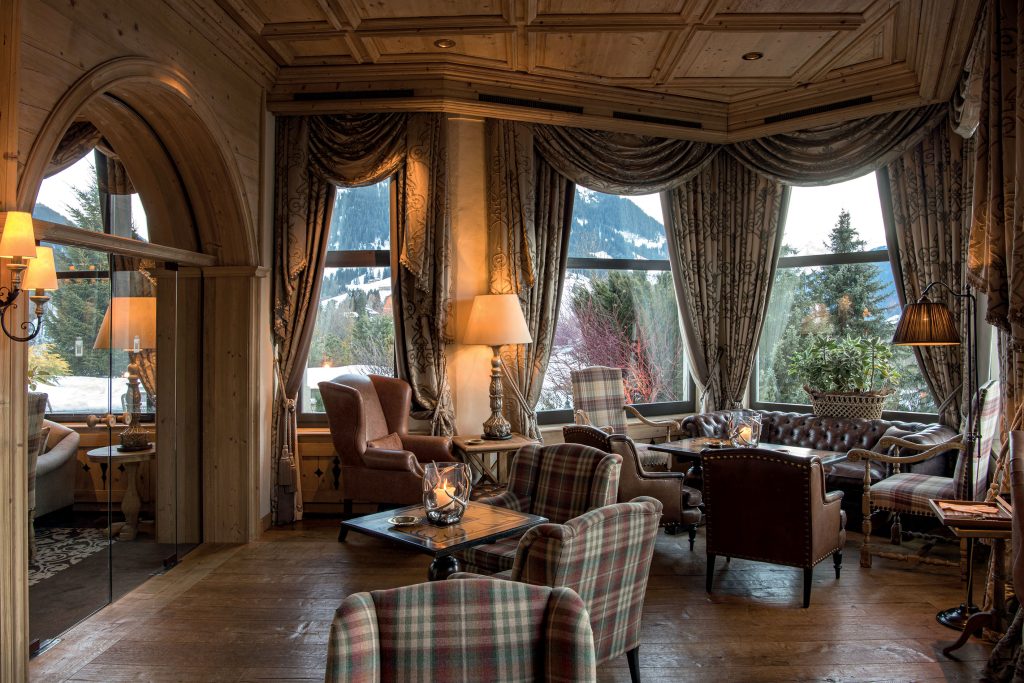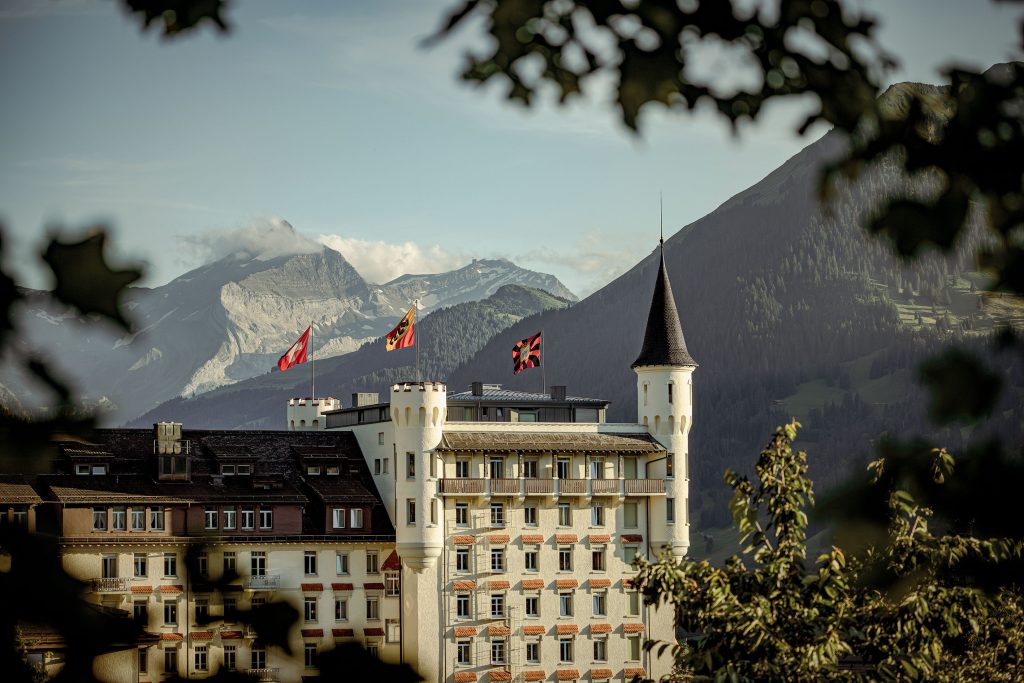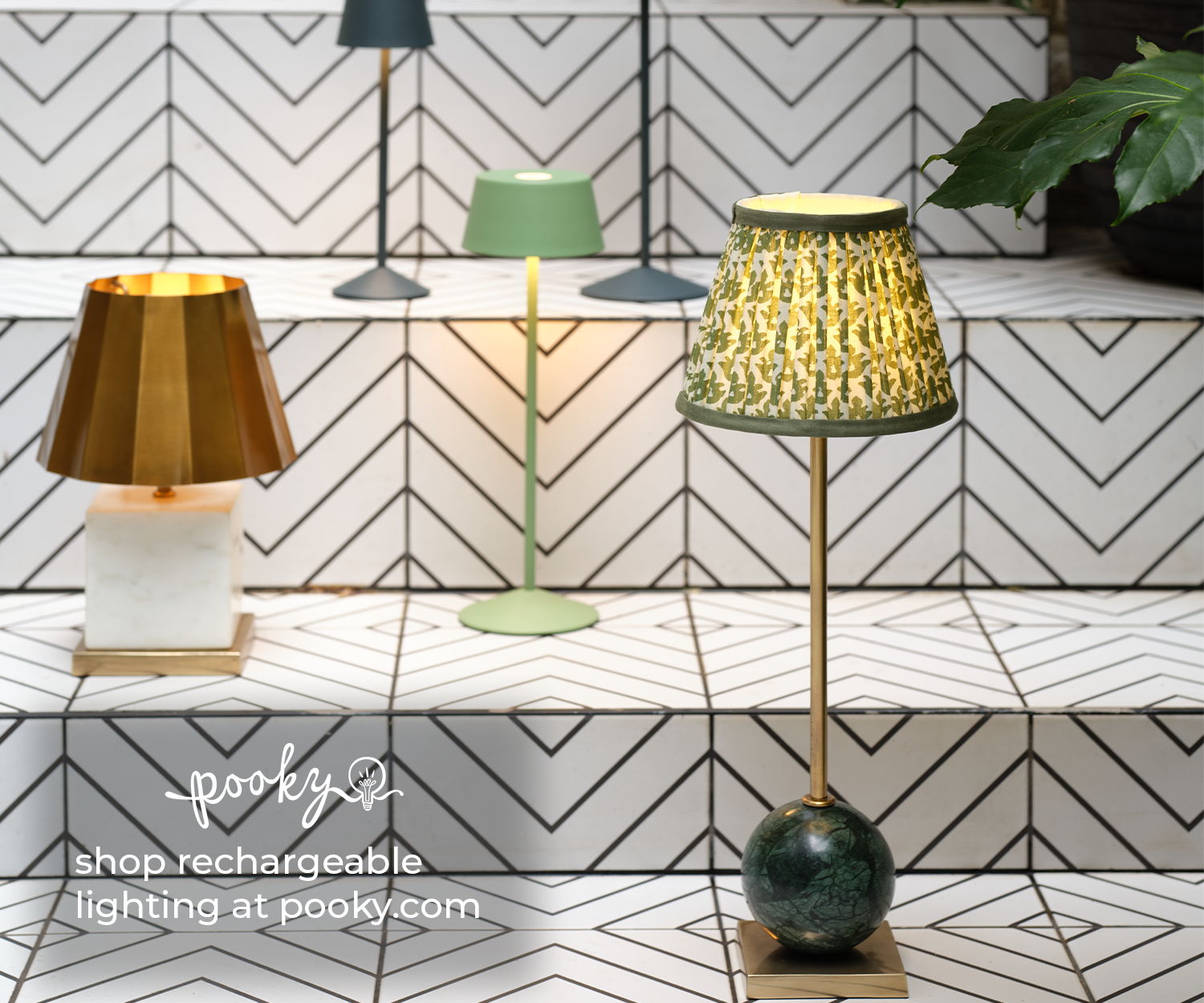Andrea Scherz, Owner and GM Gstaad Palace
From legendary soirées to intimate moments with royalty, Gstaad Palace has been the stage for over a century of alpine glamour. At its helm is Andrea Scherz, the third generation of his family to guide the Swiss icon – and our guide behind the snow-capped scenes of this historic hotel.
Andrea Scherz grew up in the shadow of the turrets of Gstaad Palace, a hotel his grandfather first managed in 1938. Today, as General Manager, he balances hands-on attention with a global vision, shaping a destination frequented by royalty, Hollywood stars and discerning travellers alike. Beyond the Palace, he also serves as Chairman of Leading Hotels of the World, advocating for the future of independent luxury hospitality.
Gstaad Palace has been the backdrop to most of your life – was there ever a moment you considered doing something completely different?
As a young man, my father always left it open to me to choose whatever profession I liked. But I soon grew to love the hotel, and also Gstaad, and it became clearer and clearer that I wanted to work in our family business and enjoy living in Gstaad.
When you look back at the hotel through the eyes of your childhood, does it still feel familiar – or has it changed in ways that surprise even you?
The hotel itself has not changed – especially not its DNA or its values – and has remained true to its original spirit. Of course, it has grown slightly over the years: we added a 1,800 square metre spa, expanded staff accommodation and increased our infrastructure space.
What has changed more noticeably is the nature of the business, especially since COVID. The seasons have become stronger and more intense, and guest expectations have evolved. But the heart of the Palace – that remains constant.
Gstaad Palace has a global reputation – do you ever feel the weight of that legacy, or have you learnt to carry it lightly over the years?
On the contrary. When I started as a young gentleman in the family business, I was simply excited. I was so happy to be working at the Palace that I didn’t feel the weight of the legacy.
Now, with age and perhaps a little more wisdom, I’ve come to better understand the responsibility that comes with it. It’s a responsibility not just to our 300-plus staff members, but also to the region. The Palace means a great deal to many people – and carrying that legacy forward is something I take very seriously.
How involved are you in the day-to-day running of the hotel? Are you the type of GM who notices if a chair’s been moved slightly – or are you more focused on the bigger picture?
The Palace is like my baby – I care deeply about it and cherish it immensely. So yes, I do notice when something is out of place. I’m closely involved in every interior design process because, at the end of the day, I want to know exactly how my “baby” is dressed, how it looks and how it feels. And I always think about it through the eyes of our guests: what would they love to see, feel and live when they are in our hotel?
At the same time, I have a fantastic management team. When it comes to daily operational details, I trust them fully and try to focus more on the broader picture.
Gstaad Palace has long attracted royalty, Hollywood legends and cultural icons. What do you believe the hotel offers that is possibly lacking elsewhere?
I don’t think it’s the hotel alone that makes the difference – at least not at first glance. I believe it’s primarily the destination that sets us apart. Gstaad’s natural beauty and its carefully preserved architectural style are truly rare. The charm of the village, its authenticity and its unspoilt character are incredibly hard to match. That’s what gives the Palace such a unique backdrop – and what guests fall in love with before they even step through our doors.
Are you still surprised by guests’ requests – or have you truly seen it all by now? And are there moments where you just have to laugh (or sigh)?
Thank God I’m of a cheerful nature – and most of the time I manage to laugh at even the most unusual requests or behaviours from our guests. I try to stay amused when someone refuses to open a window on a warm summer day because a fly might come in, or when there’s a request for air conditioning while it’s 15 degrees outside.
You really do need a sense of humour to keep up with certain types of guests. It helps maintain perspective – and patience.
Could you share an example of an extraordinary guest request – and how far the hotel went to make it happen?
We’ve had quite a few remarkable requests over the years. One couple recently asked if we could open the hotel just for them – the night before our official season opening. That alone was a flattering request.
Another guest wanted to take delivery of his custom-built Rolls-Royce directly in the Palace gardens. We transformed the entire space into an event location, complete with a stage, lighting and sound – turning a car delivery into a moment worthy of a gala.
One of the most memorable moments came when a guest called me on a Thursday afternoon asking us to organise the biggest party of the winter – for his wife’s birthday. The theme had to be Indian. His musical request? The legendary band Chic, with Nile Rodgers himself. And we did it. Within four days, we flew Chic into Switzerland, built a custom stage, transformed our ballroom into an Indian palace, brought in Indian chefs from England and filled the space with flower arrangements worthy of 1001 Nights.

Over the past 100-plus years, however, the interiors have evolved to become slightly richer and more opulent, while still staying true to the fact that the Palace is in the mountains.
From a design perspective, how has the hotel’s interior aesthetic evolved over the years? Do you work with in-house designers, or bring in outside talent?
When the Palace Hotel was built in 1913, the budget was relatively limited. The interior design was kept quite simple – no ornate ceilings, elaborate wall treatments or decorative flourishes. Over the past 100-plus years, however, the interiors have evolved to become slightly richer and more opulent, while still staying true to the fact that the Palace is in the mountains.
We always aim to reflect the cosiness of our alpine setting. We bring warmth through carefully chosen fabrics, carpets and fireplaces – the goal is for guests to feel at home the moment they step through our doors. Even though the Palace has presence, it’s not a massive hotel in terms of size, and we want that intimacy to come through in the design.
When it comes to the rooms, we collaborate with a British–Swiss interior designer, while a Swiss couple helps us with the public spaces. That said, I’m personally very involved in every step of the process – because I care deeply about how the Palace looks and feels. It’s more than design; it’s part of our identity.
Gstaad Palace has stayed proudly independent. Do the big hotel groups still come knocking – and is it true that Michael Jackson once tried to buy it?
Yes, we still have hotel groups testing the waters – and also independent investors who would love to add the Palace to their portfolio. But we say no to them, just as we once said no to Michael Jackson.
Apparently, he had a book on display in his office with a photo of the Palace on the cover. He told us he had been looking at the hotel for years and had fallen so much in love with it that he wanted to buy it. Unfortunately for him – but fortunately for us – we declined. We’re still very happy running our family business, and we remain committed to staying independent.
In 2022, you became Chairman of Leading Hotels of the World – a position your father once held. In the wake of a global pandemic, how were you able to support your members?
During the global pandemic, Leading Hotels of the World supported its member hotels primarily by offering advice on how to keep guests and staff safe. We also implemented targeted promotions, mostly on a per-country basis, although this was extremely challenging given the differing legal frameworks and restrictions from region to region.
Where we could be most helpful, however, was in easing the financial pressure on our members. We reduced fees to help hoteliers lower their costs at a time when income was limited or non-existent. It was an incredibly difficult time, but the solidarity within the LHW community was a strong source of support for many.
What does your role as Chairman involve? What are your main responsibilities within the organisation?
As Chairman, together with my fellow board members, we are responsible for the supervision of the owning company. This includes appointing key leadership roles such as the CEO and CFO, and overseeing the organisation’s global finances.
Above all, our role is to represent the interests of the shareholders. We also work to ensure that risks are properly mitigated and that the company is following a clear and appropriate business strategy. It’s a governance role, but one that requires a solid understanding of both the hotel industry and the specific needs of our member hotels.
LHW is owned by its members and run by hoteliers. How does that shape the way decisions are made and the sense of community within the group?
I believe this is exactly what makes Leading Hotels of the World so unique and powerful. It is a company created by hoteliers and for hoteliers. Every decision is made with the interests of the shareholders in mind, and the shareholders are, of course, the member hotels.
Leading is not focused on profit. Instead, the company exists to help hoteliers do things they could not easily do on their own – to promote their properties, grow their businesses, strengthen their brands and, ultimately, fill their beds. There’s a strong spirit of collaboration, and the shared goal is always to support each member hotel in becoming even more successful.
Do you think luxury travel is in a good place today? And how do you see its future evolving – especially for independent hotels?
The future is bright for independent hotels. According to our research, today’s luxury traveller is increasingly drawn to properties that are independently owned – often family-run – and rich in character. Guests are looking for authenticity, for places that reflect the local atmosphere and offer something unique. They are less interested in the uniform standards and procedures of global chains.
There’s also a shift in mindset among affluent travellers: the focus is moving away from owning luxury goods towards seeking out luxury experiences. That means discovering new destinations, staying in exceptional hotels and truly engaging with the local culture.
We’re seeing strong demand for our kind of hotels – and that demand continues to grow, especially as new markets emerge with a growing appetite for meaningful travel. All signs point to a very promising future for small, independent luxury hotels.
You’re the third generation to run Gstaad Palace – is there a fourth generation showing interest in the family business?
I have two children. My son studied hotel management and is currently working for a Ferrari dealership in Switzerland – sports cars are one of his great passions. For the moment, he’s exploring his options and following his interests. Who knows – he might still find his way back to the hotel world one day.
My daughter holds a bachelor’s degree in psychology, and just a few months ago she decided to pursue further studies in hospitality. She’s now working towards a master’s degree at a hotel management school.
So yes – there’s a real chance that a fourth generation of Scherz will continue the legacy of the Gstaad Palace.



